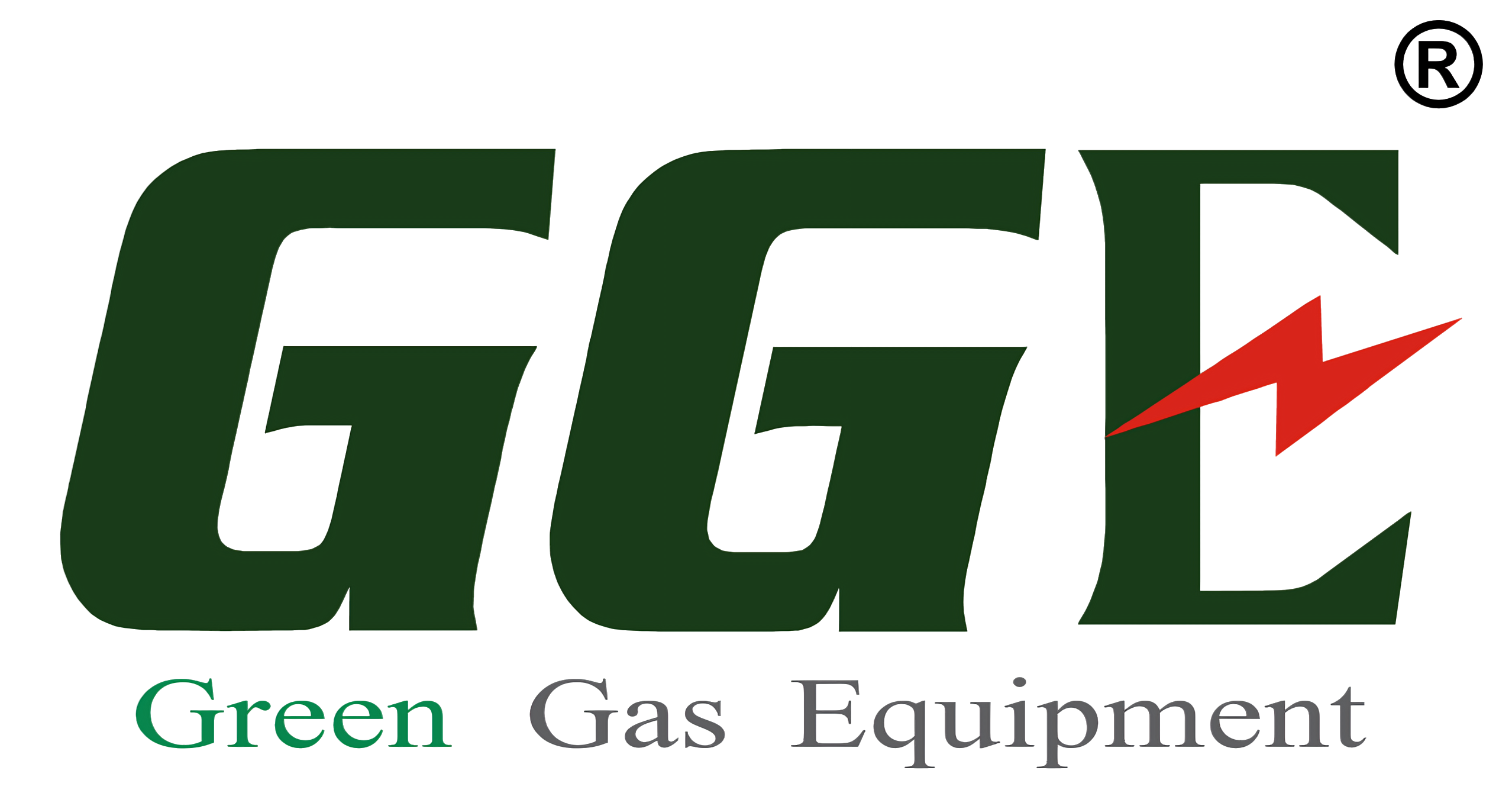Biogas Handling Equipment
- Biogas Analyzers and Flowmeters
- Biogas Blowers
- Dehumidifiers
- Flare Systems
- Moisture Traps
- H₂S Scrubbers
Biogas Analyzers and Flowmeters
Biogas Analyzers
GGE offers both, portable and standalone Biogas Analyzers designed to measure up to four gases: CH₄, CO₂, H₂S and O₂.
General Specifications:
- Range:
- CH₄: 0 to 100%
- CO₂: 0 to 100%
- H₂S: 0 to 1%
- O₂: 0 to 25%
Key Features:
- Provides local and remote readings accessible through SCADA systems.
- Optional built-in gas dryer is available.
- Includes inbuilt air mixing before testing for scenarios involving high H₂S gas levels.
Biogas Flowmeters
GGE manufactures Flow Meters designed to measure various gases such as natural gas, CNG, LPG, flare gas and syngas. These meters are specifically engineered to endure the wet and corrosive environments typical of biogas applications.
One distinctive feature of GGE flow meters, not found in other brands, is their capability to provide a rough estimation of methane content within the gas.
General Specifications:
- Suitable for pipeline sizes ranging from 25 mm to 400 mm
- Accuracy Range: Class 1.5
Features:
- Low pressure drop, corrosion-resistant, with no moving parts and requiring low maintenance.
- Utilizes a single probe for measuring flow rate, velocity, temperature, and methane content.
- Offers local digital display, remote readings, SCADA connectivity and optional internet connectivity.
Biogas Blowers
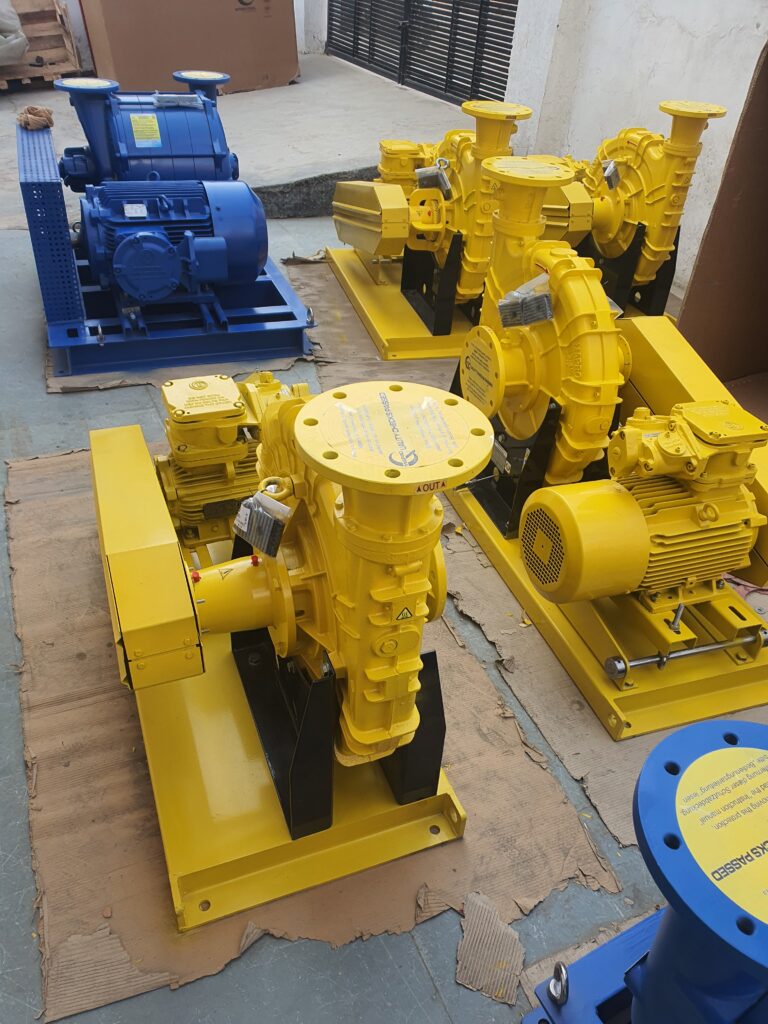
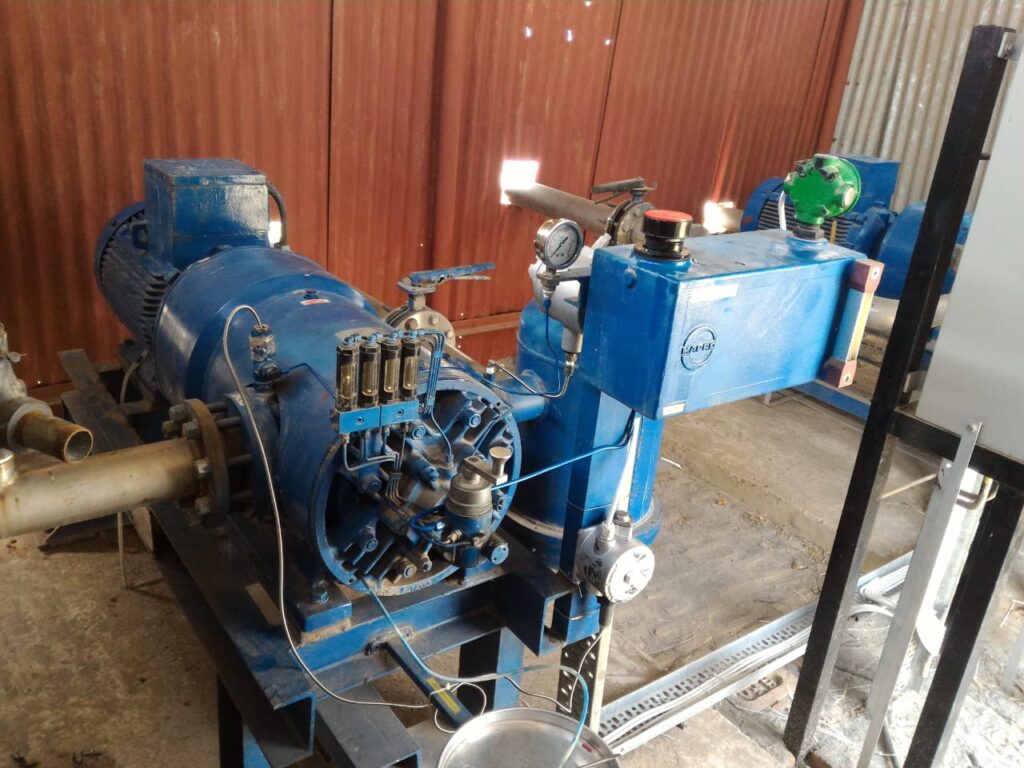
The Mapro® Biogas Blower increases the pressure of the gas it pulls in by using an impeller to create swirling vortexes along the outer circular channel. As the impeller spins, its blades push the gas forward and outward due to centrifugal force, creating a spiral path. This motion causes the gas to be compressed repeatedly as it travels through the blower, steadily increasing its pressure along the channel. This design ensures efficient compression of gas for various industrial and environmental applications.
Advantages:
- Easy Installation: Simplifies setup and integration into existing systems or new installations.
- Low Noise Level: Operates quietly, minimizing noise pollution in the surrounding environment.
- No Vibration: Ensures smooth operation without vibration, enhancing reliability and reducing wear.
- Pulsation-Free Gas Flow: Delivers a steady and consistent flow of gas, suitable for sensitive applications.
- Minimal Maintenance: Requires little upkeep, reducing operational downtime and maintenance costs.
- Oil-Free Operation: Does not require internal lubrication, ensuring the gas remains uncontaminated and completely free from oil, making it suitable for applications where purity is essential.
Flame Arrestors
Flame arrestors are critical safety devices installed to prevent the spread of flames through biogas lines between different equipment units. They are typically recommended to be placed before and after each major equipment component to effectively contain any potential fire hazards.
GGE specializes in the production of fabricated flame arrestors designed for easy maintenance. These arrestors can be conveniently opened for periodic cleaning or replacement of their internal elements, ensuring continuous reliability and safety. GGE flame arrestors are designed to accommodate pipelines ranging from 25mm to 600mm in diameter.
Flare Systems
Flaring of biogas often occurs with minimal infrastructure and typically without energy recovery. In instances where the biogas production exceeds the capacity of energy recovery systems due to high production rates or maintenance issues, additional measures become necessary to eliminate safety risks and protect the environment. The primary goal is to mitigate the risk of explosion caused by methane in the atmosphere.
While short-term storage of biogas without compression is feasible, long-term storage is generally impractical due to its large volume. Compression and high-pressure storage are viable options but are usually associated with biogas upgrading processes due to concerns such as corrosion and high costs. Biogas flare systems are utilized to safely combust surplus biogas that exceeds the demand of energy recovery plants or in situations where these plants are non-operational. They also provide a reliable method for safely disposing of biogas produced by anaerobic processes where economic viability for energy recovery is not established.
GGE offers two main types of flare systems: Open Flares and Enclosed Flares, along with a wide range of accompanying accessories. These products ensure efficient and safe operation of biogas flare systems.
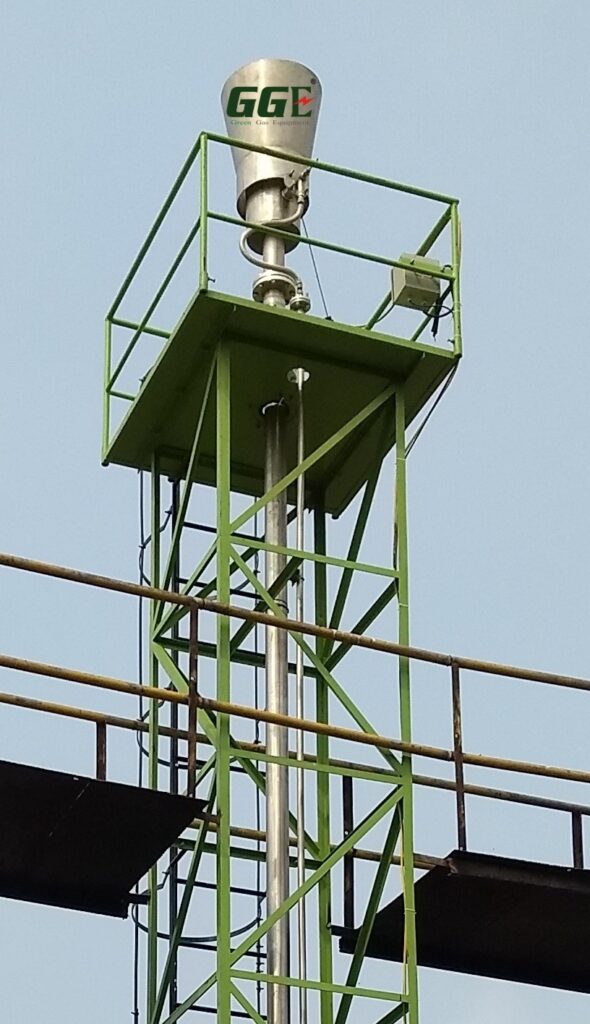
Open Flare Systems
Open flare systems use a vertical pipe for gas combustion, often with a pilot burner to ignite and enhance the efficiency of combustion. These flares are renowned for their ability to handle high volumes of gas flow, surpassing the capacity of enclosed flare systems.
Enclosed Flare Systems
Enclosed flare systems feature a burner enclosed within a specialized heat-resistant shell with internal insulation. This setup effectively reduces noise, brightness and heat emission. By maintaining stable temperature and airflow, enclosed flares ensure more efficient combustion of gas compared to open flare systems.
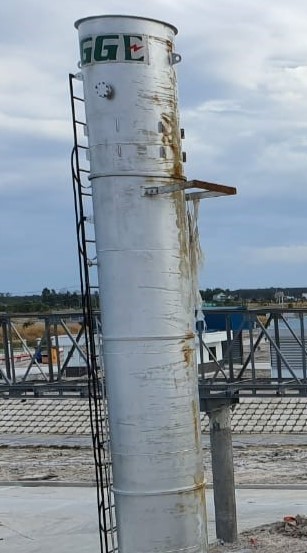
Dehumidifiers
Biogas, sewage gas and landfill gas always contain water vapor, which can cause significant problems during combustion. This vapor leads to corrosion in gas engines, resulting in frequent breakdowns and expensive repairs. To prevent these issues and minimize long-term maintenance costs, it’s essential to remove moisture from biogas using a biogas dehumidifier.
How a Biogas Dehumidifier Works: A typical biogas dehumidifier includes a gas-to-cold-water heat exchanger combined with an industrial-grade water chiller. This setup lowers the gas temperature, causing the water vapor to condense and be removed. The condensed water is collected in a trap after the chiller and drained automatically through a siphon system.
Benefits of Using a Gas Dehumidification System: Implementing a gas dehumidification system significantly extends the lifespan of engines and reduces maintenance costs over time. By employing a biogas dehumidifier, you safeguard your CHP engine and other equipment from corrosion, ensuring smoother operation and lower repair expenses in the long run.
Moisture Traps
Condensation of water happens in every biogas line and it’s crucial to remove this water from the system without losing gas. GGE Moisture Traps, which can be seamlessly incorporated into the pipeline, efficiently drain out this water. As gas flows into the Moisture Trap, it encounters a specially designed surface that induces flow reversals. This process causes moisture to come together and form droplets, which then collects at the bottom of the trap. These traps can be easily installed into the pipeline to ensure effective water removal.
Suitable for pipelines ranging from 25mm to 600mm, available in both manual and auto drain configurations.
H₂S Scrubbers
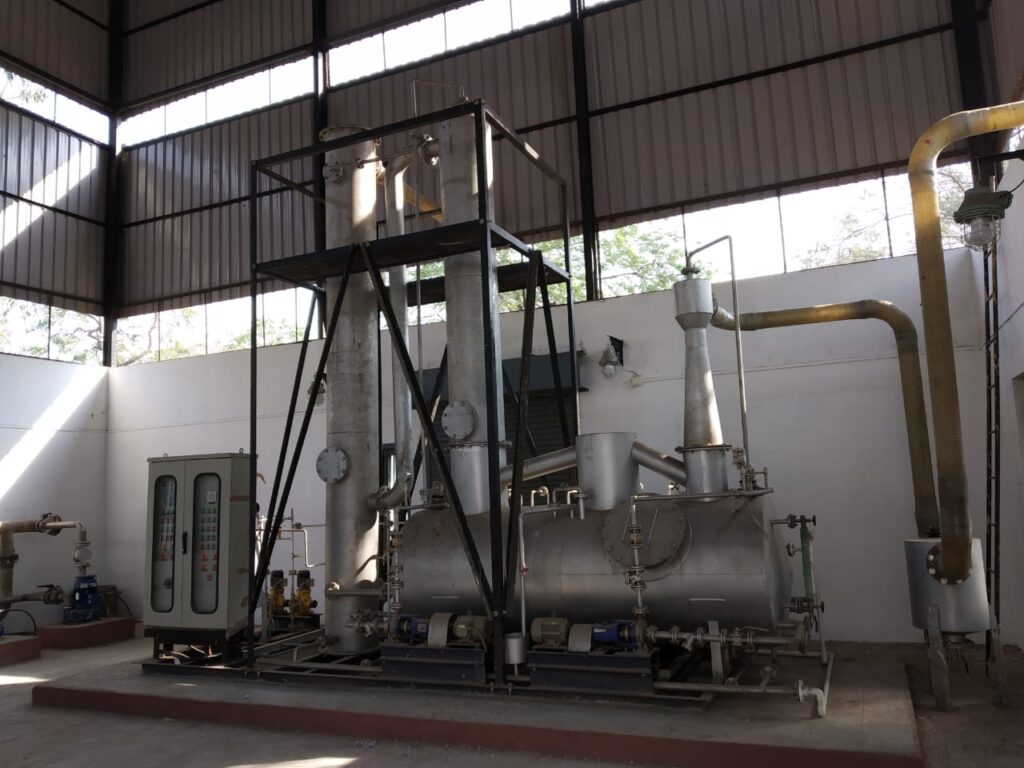
Hydrogen sulfide (H₂S) is a dangerous gas that smells like rotten eggs and can form sulfuric acid when it mixes with water. This acid is highly corrosive and damages metal parts like boiler tubes and engines within a few hundred hours of exposure. In agricultural areas, biogas systems often release H₂S, which when burned, creates sulfur dioxide, a pollutant harmful to the environment and human health.
Therefore, removing H₂S is crucial to protect equipment and ensure technology systems operate safely.
About Chemical Scrubber: Absorption, a fundamental process in chemical engineering, is widely used to control gas pollution. Our biogas scrubber, utilizing caustic Sodium Hydroxide (NaOH) treatment, is highly favored for its unmatched advantages over other methods. The system first removes suspended particles and foam using a Venturi scrubber, then treats the biogas in a packed tower with chemicals. This design maximizes chemical usage efficiency, resulting in significant cost savings of 25-50%, depending on biogas composition and H₂S levels.
GGE offers tailored and cost-effective solutions to meet specific project needs.
